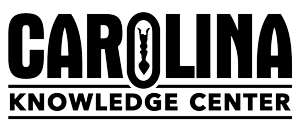As students journey through school, they will be tasked with responding to a variety of written assessments. These assessments include homework problems, lab reports, argumentative essays, and open-ended or free-response test questions. Obtaining, evaluating, and communicating information is a scientific and engineering practice as outlined by the NGSS and the National Research Council (NRC). Additionally, the College Board® emphasizes scientific communication in both practice 1 and practice 6 of the Advanced Placement® course descriptions.
Many of the high-stakes tests require students to answer questions with prompts meant to elicit specific information formatted in a recognizable style by the scorers. What’s the difference between explaining and justifying or identifying and listing? Unfortunately, for students at all grade levels, a misinterpretation of the question prompt can result in answers with correct information being scored with low marks.

Resources to guide your students
Carolina is here to help with resources you can use to guide your students through the labyrinth of writing prompts. Each monthly lesson contains:
Explanatory information about techniques
Examples
Practice questions for different writing prompts
The student practice is great for bell-ringer activities or time-fillers during a lab procedure.
We don’t expect students to play an instrument, complete a geometric proof, or design a web page without instruction and practice—the same is true for writing assessments.
Assessment prompts
AP® is a trademark registered and/or owned by the College Board®, which was not involved in the production of, and does not endorse, these products.
More Test Taking Tips
Writing Strategies for AP® Exams
Teachers and students continue to face unprecedented challenges due to...
Read MoreAdvanced Placement® Exam Preparation and Test Taking Tips
5… 4… 3… 2 … 1 … Test day! Students...
Read MoreAP® Free-Response Questions: Dos and Don’ts
Flo Gullickson, an experienced AP® Environmental Science teacher and exam...
Read More







1 Comment
Really nice resource!! Thank you for making these PDFs free and available to all. I teach mostly sophomore level students at a university and I’m going to share these PDFs on written assessment skills with my students.